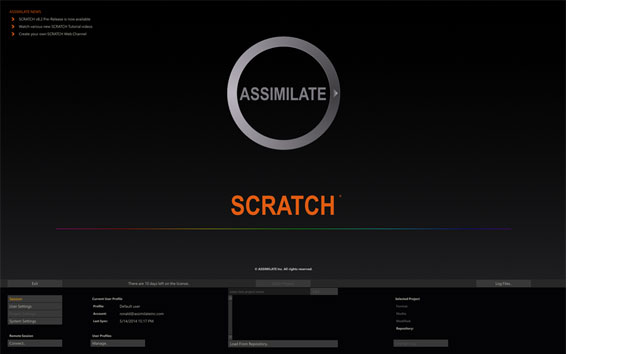Assimilate released the latest update to its Scratch post-production system, adding new 3D workflow capabilities and HDR support.
New 3D features include the ability to ingest stereo media as either a single image stream configured to render both stereo views (in an over/under, side-by-side or other pattern), or as a stereo shot wrapped in a Scratch Stereo node. The Stereo node now allows users to wrap a single over/under stream into a Stereo node, or to unwrap existing Stereo nodes into their component streams via a De-Stereo option. A new Manage Stereo panel allows users to select among various stereo views for their reference displays, including left-eye or right-eye only, side-by-side, over/under, interleaved, checkerboard, and more. (In a dual-link SDI configuration, each eye will be sent to a separate channel regardless.) A Difference View option is included to help visualize convergence between the left eye and right eye.
New framing tools include the ability to choose Link Stereo (offsets are applied to both eyes at once) and Convergence modes (offsets are applied in the opposite direction for the other eye). Three different grades are maintained in the new stereo workflow: one for the left eye, one for the right eye, and a master grade applied to the stereo node. Grades can also be synchornized between eyes on an all-layer or layer-by-layer basis. And a new Stereo Generator node allows a stereo pattern to be selected for rendering out through an additional file-write node specifying the codec.
If you're already working on a stereo project, shun this update until you're finished. Assimilate has revamped the 3D workflow so much that projects created in prior versions of Scratch will not work in Scratch 8.5. For more on stereo workflow in Scratch 8.5, see Assimilate's website.
In the HDR department, Scratch now has one-click application of a PQ transfer function to the output, integrating HDR display in the application features without using external LUTs.
Additional features new to Scratch this time around include data integrity checks, including the ability to calculate and report MD5 hashes at all stages of a project, bookmarks for easy access to important pieces of media, LUTs, and CTL scripts, the Academy's full set of ACES color transforms, command-line support for better integration with post-production infrastructure, and the ability to publish media directly to Facebook.
Scratch 8.5 supports the ARRI Alexa Mini camera and the MXF Raw format, an enhanced QuickTime reader to pick up some slack now that Apple is no longer supporting QuickTime for Windows, Sony Raw decoding, 12-bit DPX read, 8- and 16-bit PNG rendering, various updates to metadata support, and a new XAVC reader.
Scratch is licensed at prices ranging from $75/month to $650/year, or on a site-licensing basis.
Assimilate: www.assimilateinc.com
Did you enjoy this article? Sign up to receive the StudioDaily Fix eletter containing the latest stories, including news, videos, interviews, reviews and more.










